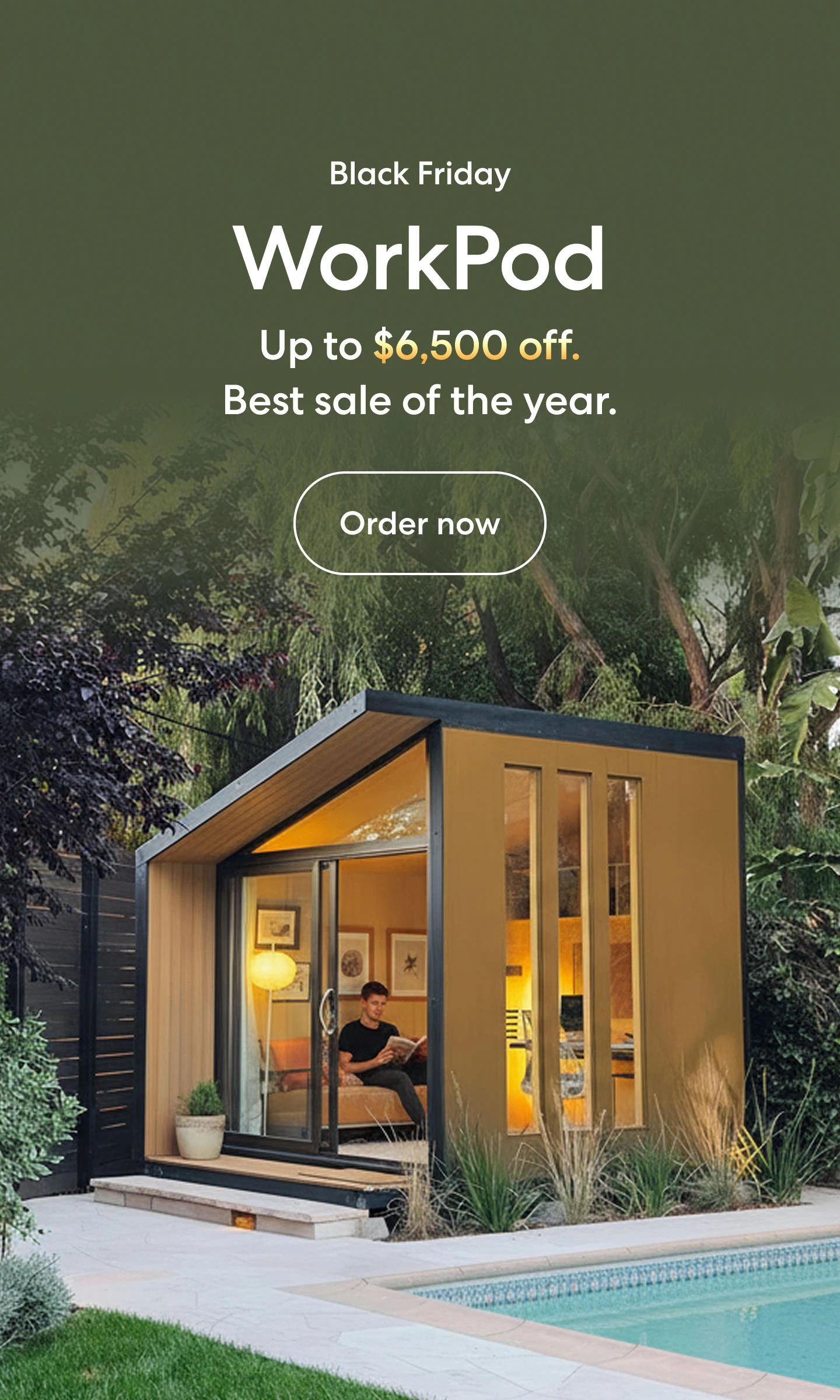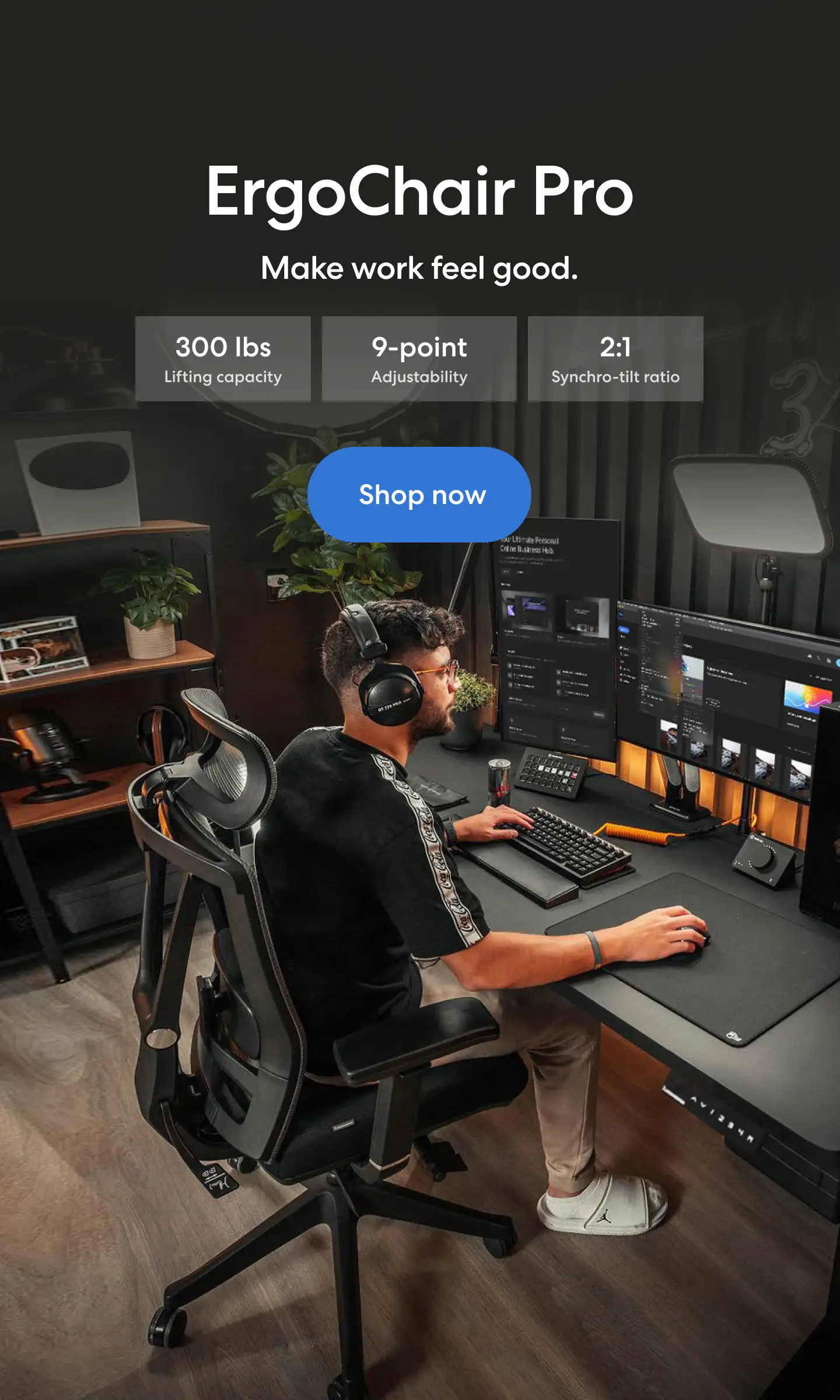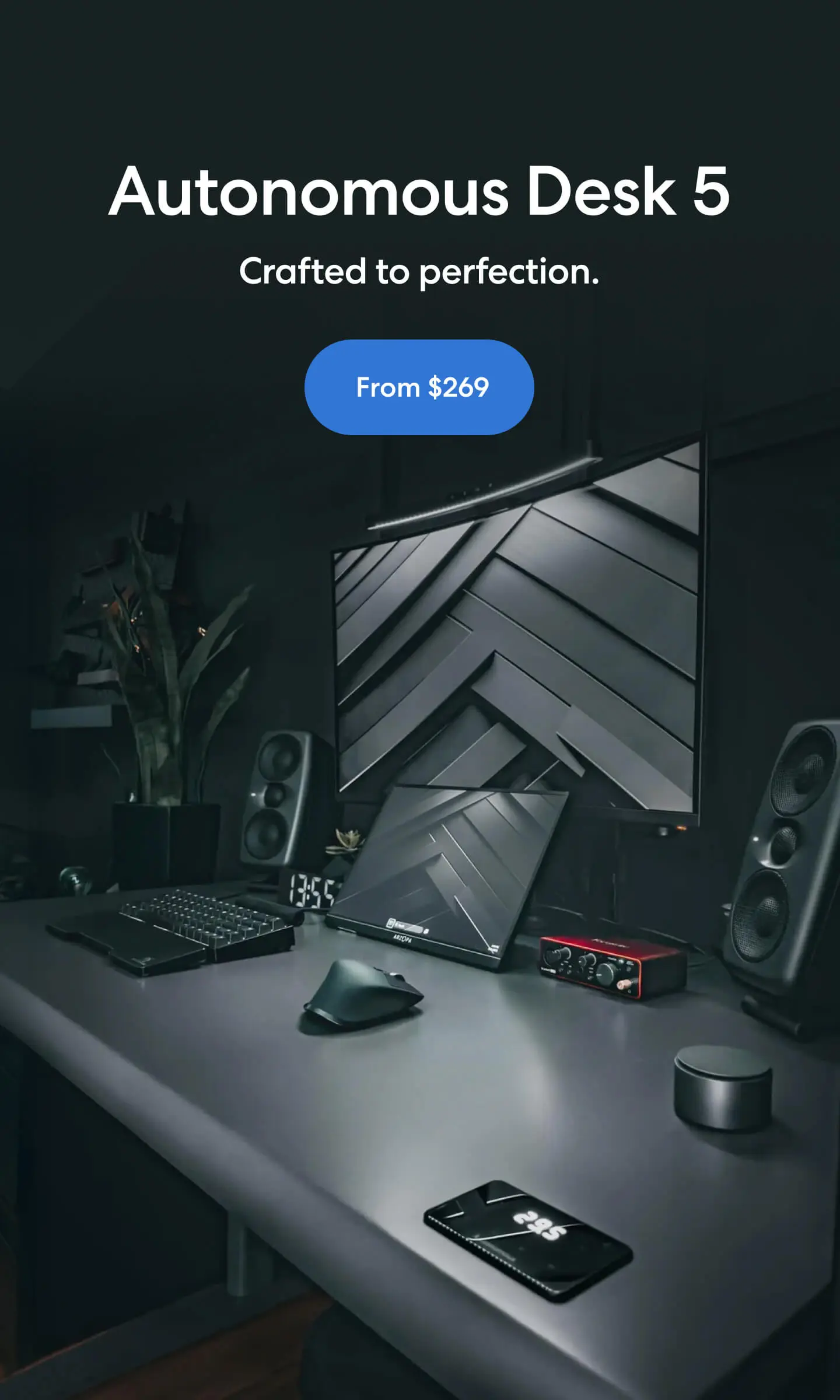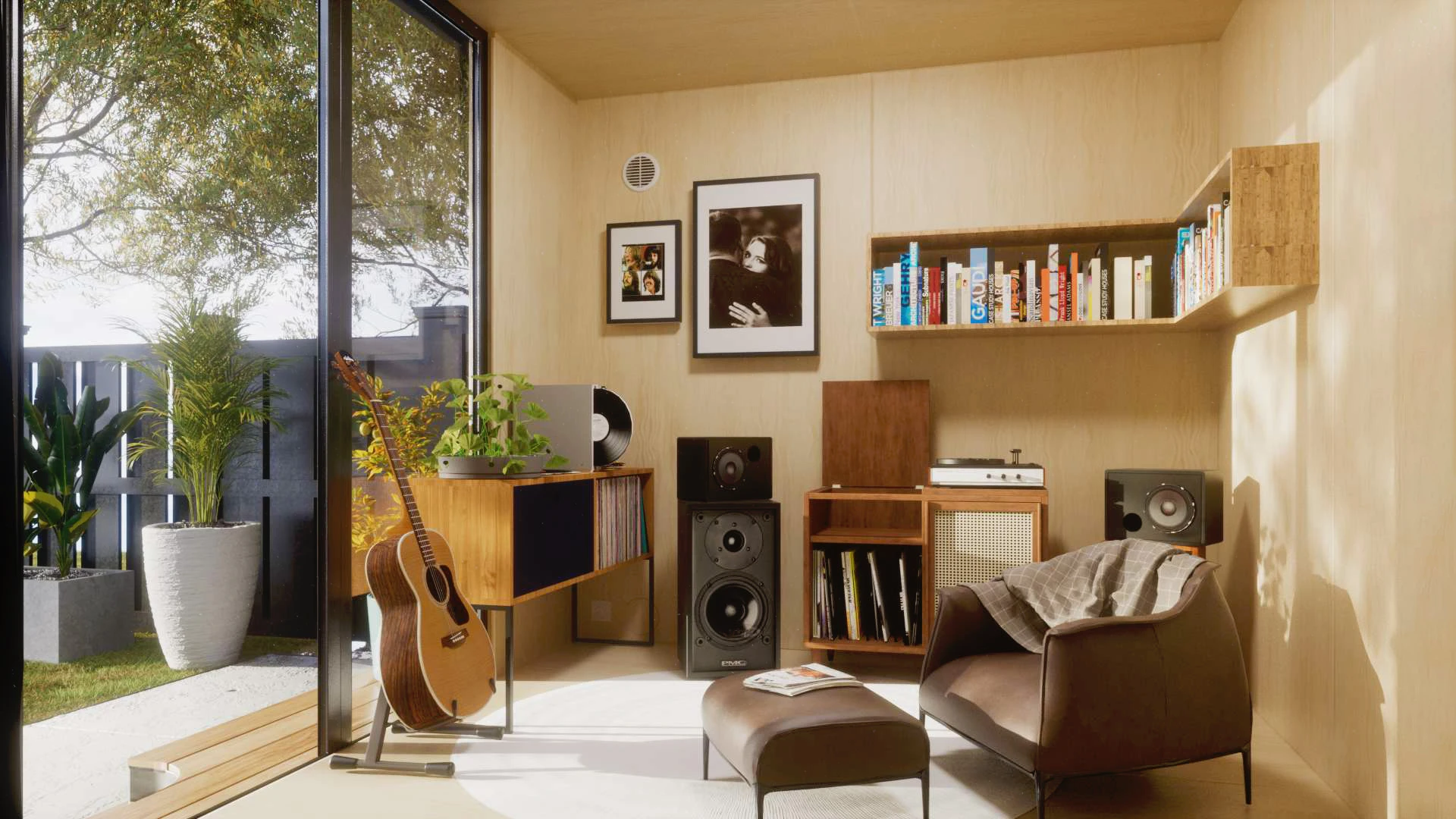
Acoustic Office Pod Setup Ideas For Productivity
Table of Contents
After three decades in construction, I’ve encountered every type of workspace imaginable. Yet, one trend stands out as a lasting solution: acoustic office pods. Whether you’re working from home, leading a busy team, or seeking a quiet zone for contemplation, these compact, soundproof acoustic work pods are transformative. When designed and established thoughtfully, they become not just four walls but sanctuaries of productivity.
This guide will walk you through what makes a great quiet work pod, how to set it up for maximum productivity, and the materials and features that matter most—whether you’re buying prefab or going the DIY office pod route.
What Is An Acoustic Office Pod?
An acoustic office pod is a freestanding, sound-dampened space designed for quiet work. Think of it as a mini room—often pre-built or modular—engineered to block outside noise and give you total control over your work environment. Unlike traditional cubicles, these pods prioritize sound isolation through heavy insulation, tight seals, and acoustic paneling. You’ll see them in open offices, coworking spaces, home backyards, and even inside large warehouses.
People use them for:
- Remote workers need solitude at home
- Professionals in open-plan offices
- Creatives or musicians building a studio office shed
- Therapists, HR teams, or anyone handling confidential conversations
A true soundproof work pod uses dense materials and multi-layer wall systems to absorb and block sound from all sides. They’re especially useful for remote workers and hybrid offices where distractions are the norm. If you’re not sure how they stack up against a traditional conference room, you can start by understanding the differences between meeting rooms vs meeting pods to help clear things up before diving deeper into considering this innovative model for your working routine.
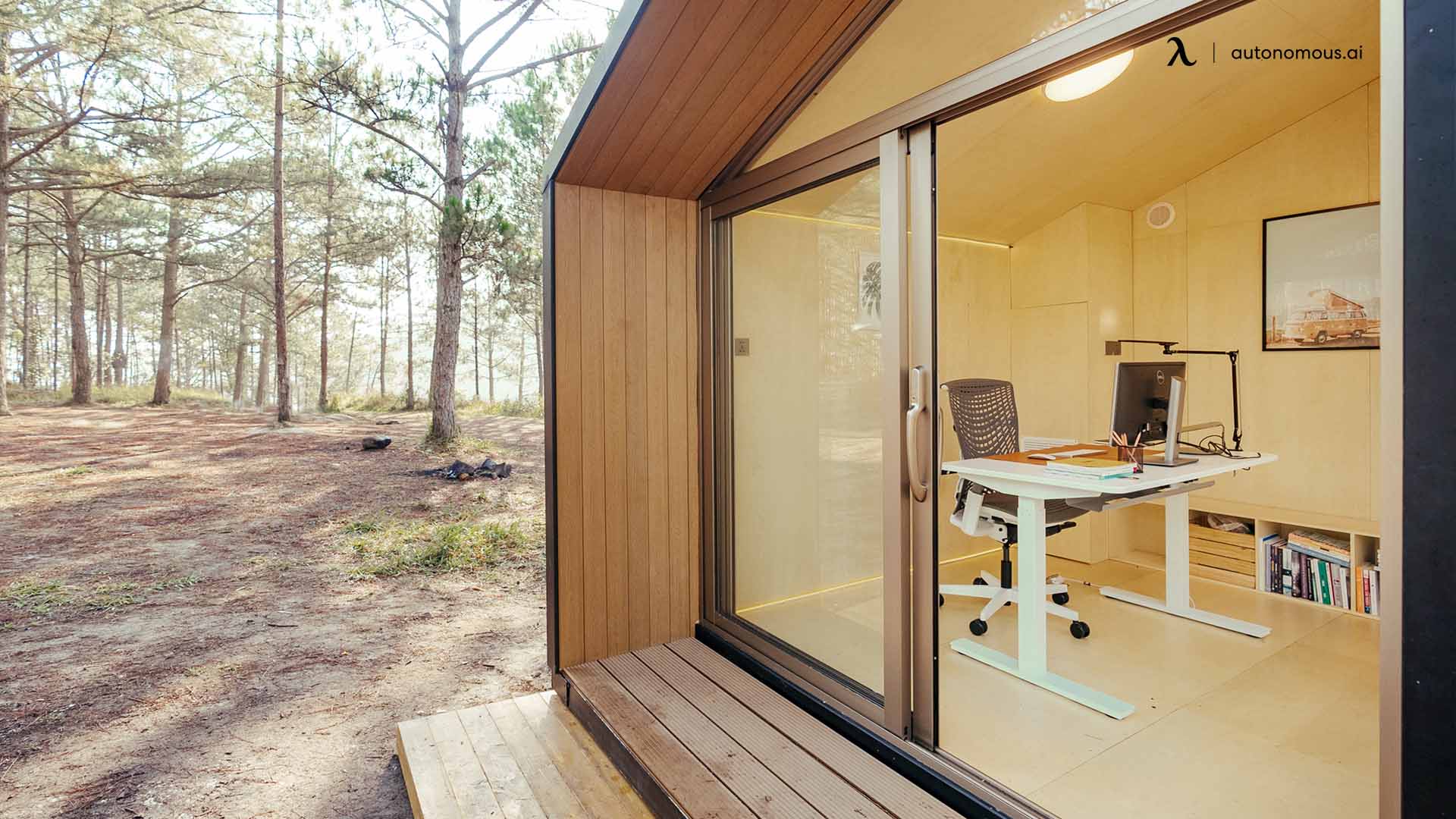
Design Elements That Fuel Productivity
A quiet pod is just the beginning. To truly get the most out of your acoustic office pod, you need to design it with productivity in mind. A well-designed acoustic work pod doesn’t just look good—it actively improves how you think, move, and stay on task. That means every feature inside should help you stay focused, comfortable, and distraction-free. Let’s break it down.
1. Soundproofing That Works
Use dense insulation materials like mineral wool or acoustic foam. Double-layer panels and sealed doors are non-negotiable. If you’re outdoors, go with weather-rated composite panels that reduce both noise and heat. An acoustic office pod isn’t worth much if sound leaks in or out. Here’s what works when you’re trying to build or choose a pod that blocks noise:
- Wall Construction: Look for double-layer panels made with materials like MDF or plywood backed by mineral wool. Internal acoustic panels for office use that help absorb echo and prevent sound bounce. This combo reduces vibration and absorbs airborne sound.
Acoustic Insulation: High-density insulation such as rock wool (minimum 60kg/m³) fills the wall cavities better than fiberglass. - Mass-Loaded Vinyl (MLV): If you’re DIYing, MLV sheets layered inside the walls drastically cut noise transmission.
Sealing: Use full-length door sweeps, foam weatherstripping, and acoustic caulk around every opening, especially outlets, switches, and ventilation holes. - Flooring: Rubber underlayment or acoustic subfloor mats under your finish flooring can help stop impact noise from traveling up.
However, if you're curious how to do this in a home workspace, you will need to start with the guide on how to soundproof your home office to break it down clearly.
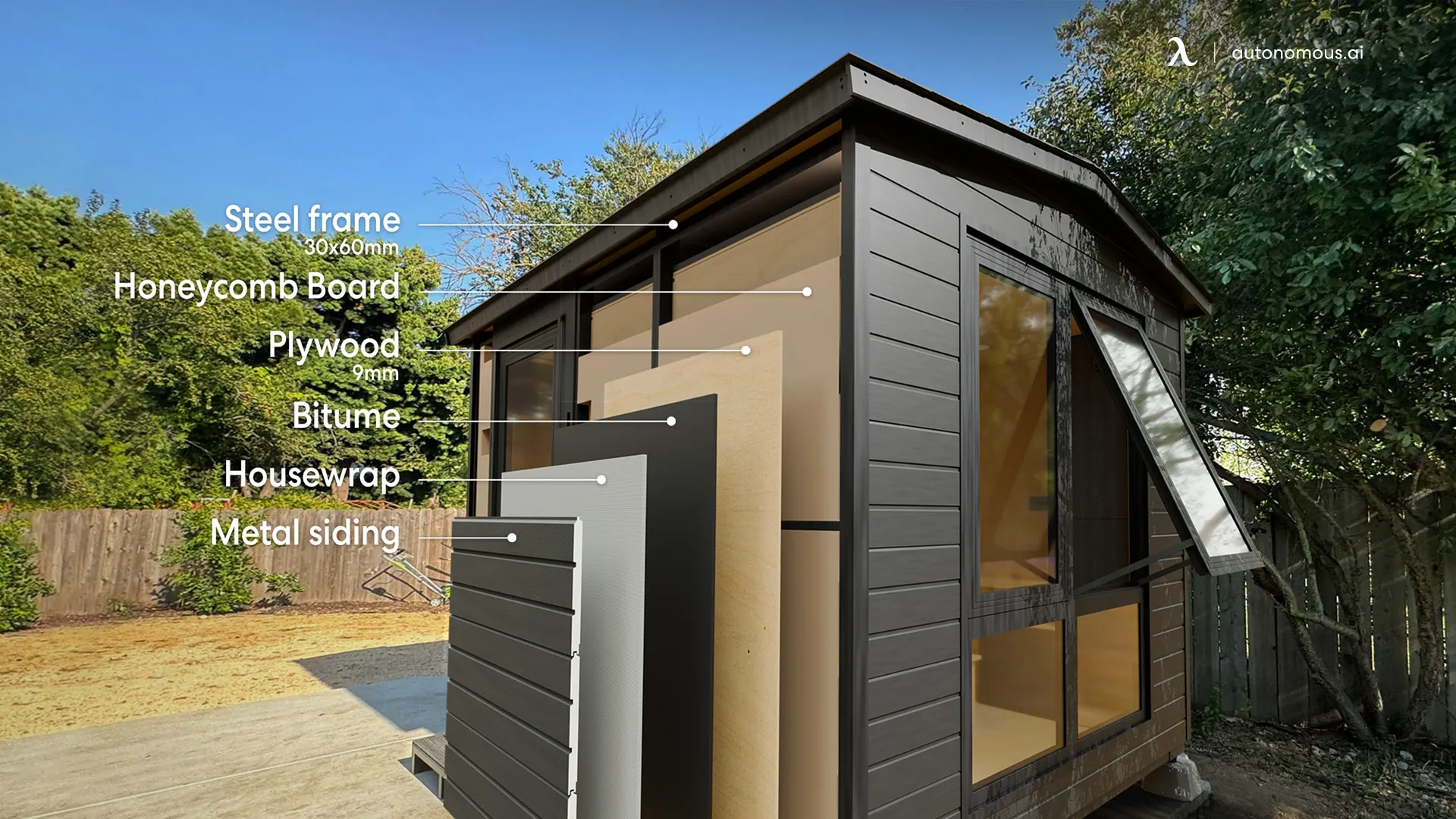
2. Lighting For Focus
Poor lighting leads to fatigue and eye strain. Here’s what makes a difference in your acoustic office pod:
- Dimmable, daylight-balanced desk LED lamp. It reduces eye strain and helps maintain your body’s natural rhythm.
- A skylight or a front-facing glass panel can also bring in some natural light, but use laminated acoustic glass to keep the silence intact.
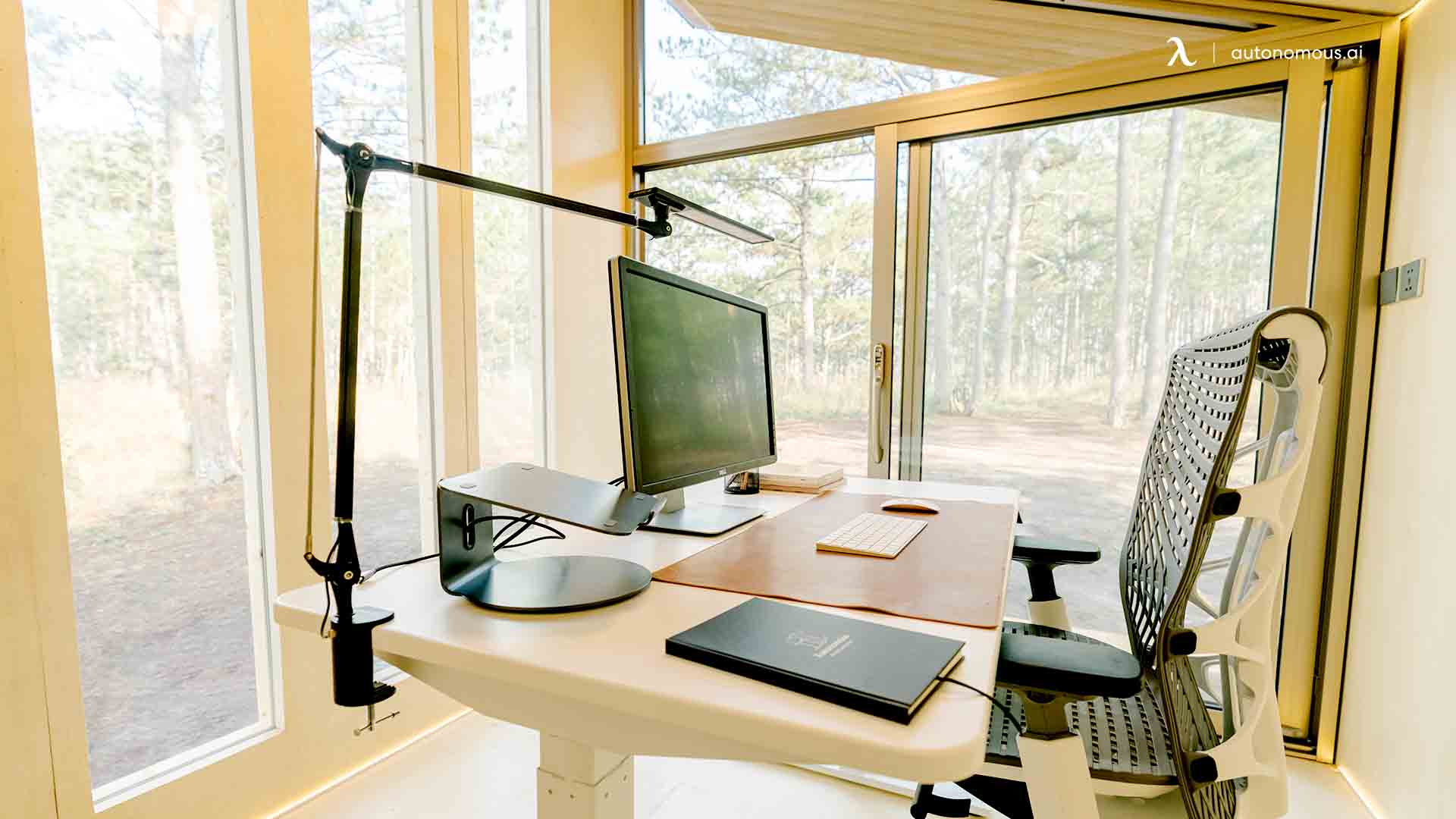
3. Ventilation Without The Noise
Fresh air is critical for alertness, but noisy fans ruin the quiet. Use:
- Silent ventilation fans (<25 dB) or a passive air exchange vent system for air circulation without constant motor hum.
- Inline duct silencers if your pod connects to a shared HVAC system.
- CO₂ sensors for auto-control in enclosed pods—it keeps the air fresh and saves energy.
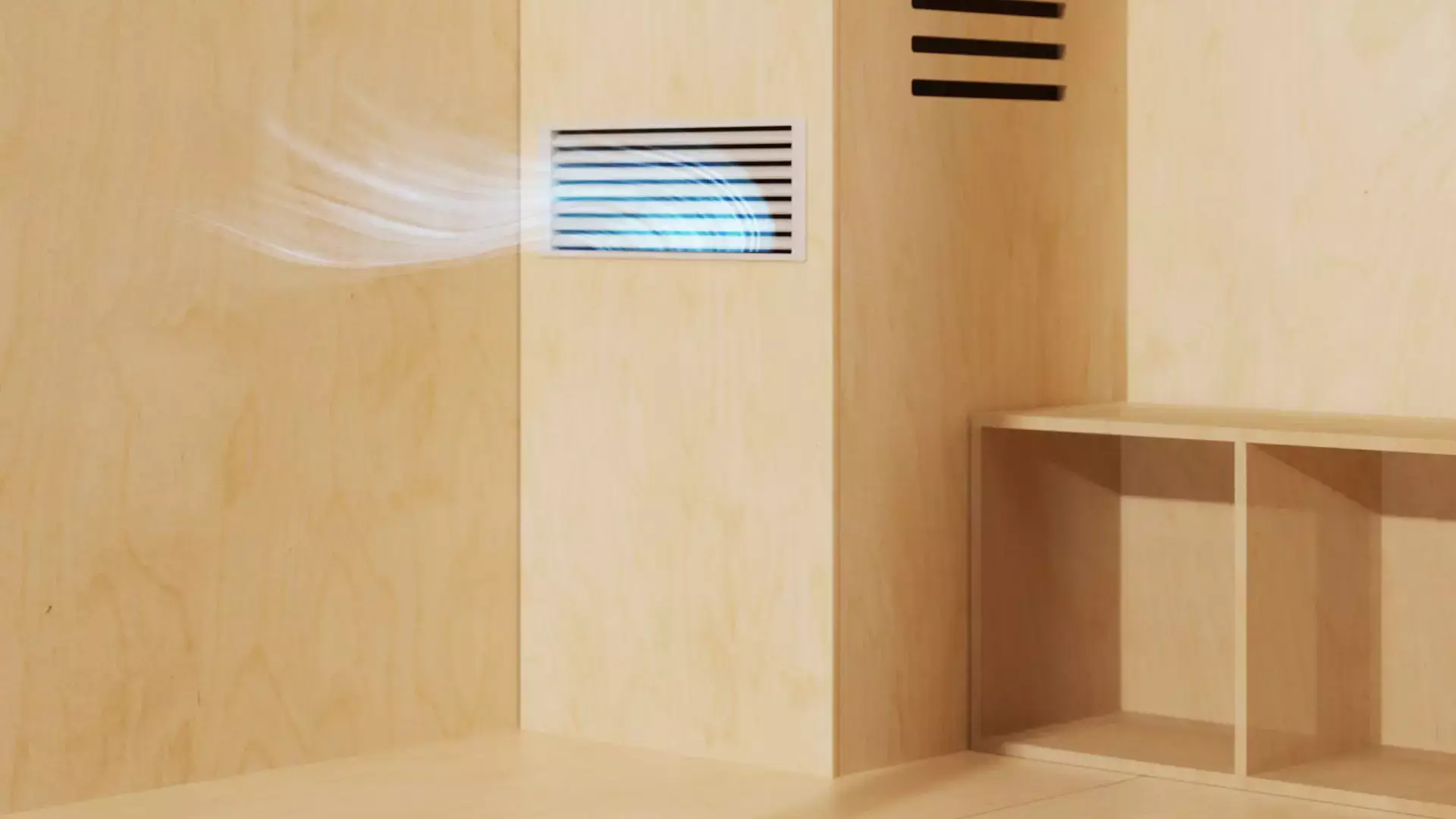
4. Tech Integration
Every second you spend reaching for a charger or dealing with a tangled cable kills your flow. Here’s how to fix that:
- In-wall cable routing to reduce clutter and trip hazards
- Flush-mounted outlets with USB-C and USB-A ports near the desk
- Monitor arms or mounts to lift screens to eye level and free up workspace
Bluetooth speaker or white noise generator, if you need to mask residual noise or want ambient sound
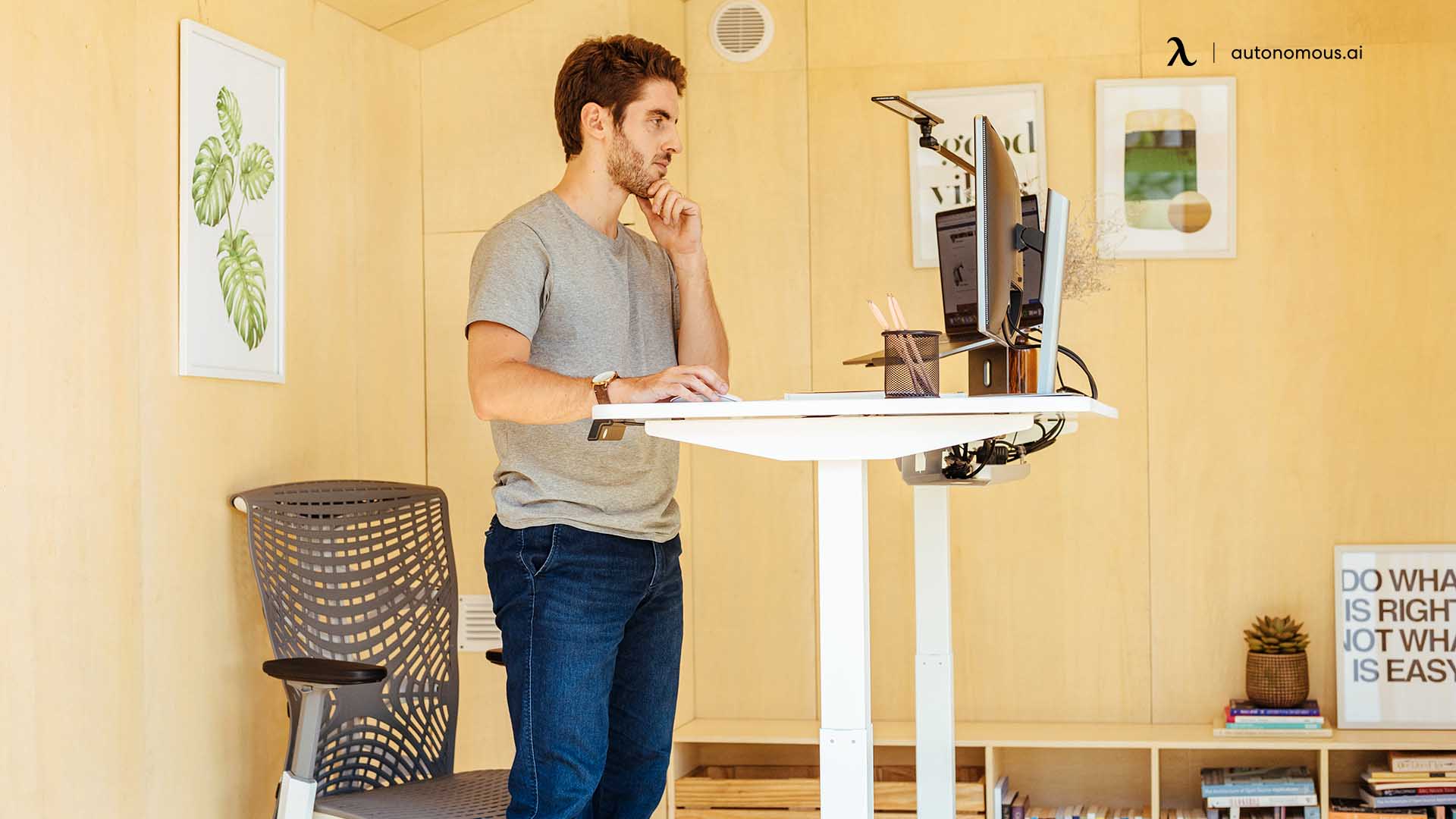
5. Desk Setup Ideas
A pod without a functional desk setup is just a box. Here's what I recommend:
- Sit-Stand Desks: Keep your energy up with a motorized standing desk that adjusts quietly (look for <45 dB motor noise).
- Ergonomic Chair: Choose one with adjustable lumbar support, armrests, and breathable mesh—comfort equals endurance.
- Storage: Use vertical storage racks, pegboards, or a cable management system to keep tools, notebooks off the desk surface.
- Visual Simplicity: Keeping decorations minimal will help you stay focused. One plant or framed print is enough—visual clutter competes with focus. However, for creative professionals or hybrid workers, the best home office pods make these features a standard, not an upgrade.
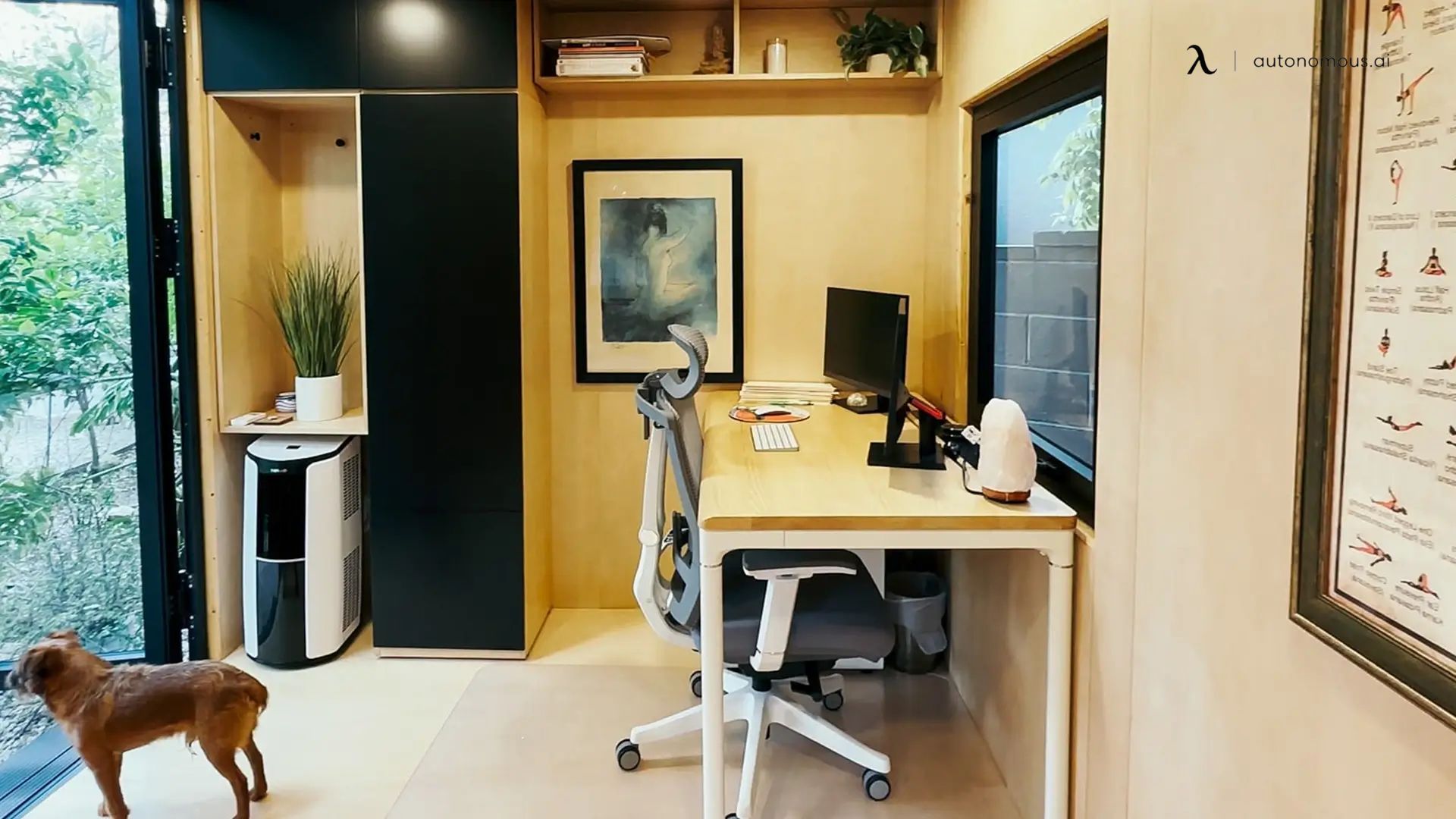
Smart Setups for Every Space
Whether you’re working from a small apartment or outfitting a company HQ, there’s an acoustic office pod that’ll fit your space—and your workflow. Below are some smart and setup ideas tailored to different environments, plus my take on which models deliver solid value and performance based on build quality, material choices, and practicality.
1. Small Home Offices
Recommended Product: Autonomous WorkPod Mini
Ideal For: Tight backyards, city lots, side yards
With just 80 sq ft of floor area, the WorkPod Mini is a tight, efficient unit that fits into most backyards or even larger balconies. What I like most is that it comes pre-wired with power and lighting, saving homeowners the headache of routing electricity themselves.
The frame is solid, with proper sealing around the doors and windows. It’s insulated enough to keep noise down, and the floor plan gives just enough room for a compact sit-stand desk and ergonomic chair. It’s perfect for freelancers or anyone juggling Zoom calls at home.
Why It Boosts Focus:
- Fully enclosed with thick, insulated panels to keep out lawnmower, neighbor, or street noise
- Built-in power access means no ugly extension cords across the yard
- Compact footprint encourages minimalism—just you, your work, and your tools
Setup Idea: Use a white standing desk, floating corner shelves, and a narrow ergonomic chair with flip-up arms to maximize space. Adding a thin area rug or a standing pad for your standing desk to soften sound reflection and boost comfort underfoot.
Want to use it for more than just work? This innovative model also works well as a backyard music studio or mini reading nook. Here is my setup idea for the perfect backyard music studio that may be a good foundation to your vision.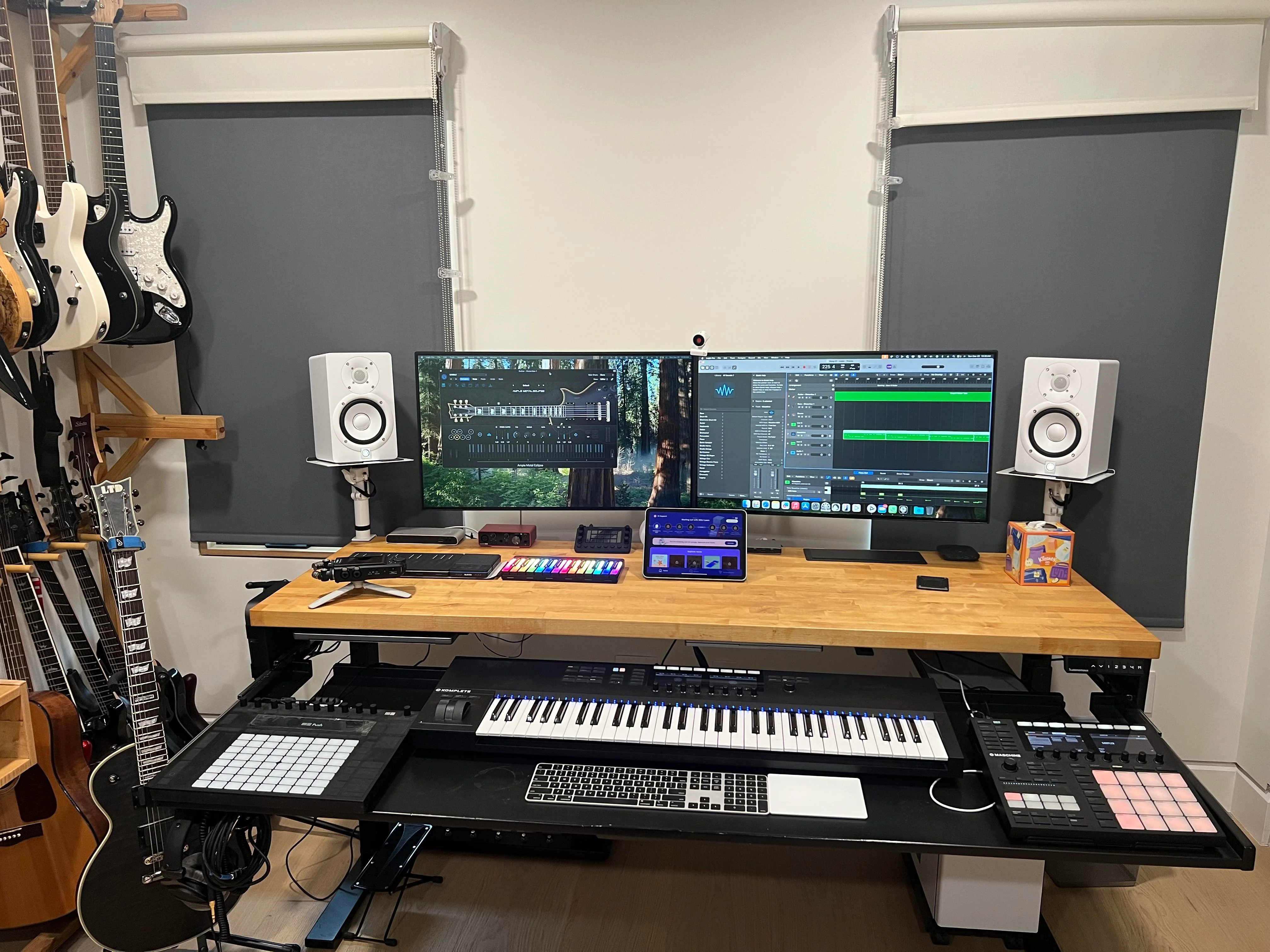
2. Corporate And Open Offices
Recommended Product: Thinktanks Office Pod
Ideal For: Modern offices, coworking floors, shared environments
The Thinktanks Office Pod is a solid solution for companies that want to give their employees privacy without sacrificing style or open-plan layouts. It’s built with tempered acoustic glass, thick sound-insulated panels, and integrated power and ventilation systems, making it a practical option for focus work or video calls in a noisy office.
For companies looking to reduce open-plan noise without a full renovation, an acoustic office pod like this Thinktanks model offers flexible office acoustic solutions that don’t require construction permits. It's one of the more scalable soundproof office booth options for employers managing open-plan layouts.
Why It Works In Offices:
- A 40 dB sound reduction rating helps block out surrounding chatter, keyboard clicks, and hallway noise
- Acoustic interior walls and ceiling help absorb internal echoes, so voice calls stay crisp
- Built-in LED lighting and motion-sensor fans make it energy-efficient and low-maintenance
- Modular and relocatable—fits into a modern office aesthetic with no permanent construction
Setup Idea:
Position pods in quiet zones or along office perimeters. Inside, you can use a wall-mounted or narrow desk paired with a compact ergonomic chair. Adding a cable tray and magnetic whiteboard panel for note-taking or project tracking. If multiple pods are installed, stagger the doors to reduce corridor congestion and visual overlap.
3. Outdoor Office Pods
Recommended Product: Autonomous WorkPod Versatile
Ideal For: Backyard full-time work, dual-use space
At 105 sq ft, this acoustic office pod is spacious enough for a full desk setup plus lounge seating. It’s built with weather-sealed siding, insulated double-pane glass, and a steel frame. Designed for all-season use.
Why It’s Great Outdoors:
- Insulation keeps sound in and out, but also protects against heat and cold
- Anchoring system and adjustable foundation make it secure on uneven ground
- Enough room for multi-function use: work by day, unwind by night
Setup Idea:
You can build your vision with a dual-zone layout: workstation on one side (standing desk, task lighting, vertical monitor), and a lounge chair or loveseat on the other. Adding a rolling pedestal or filing cabinet to keep paperwork tidy. This layout works especially well for those building a modern backyard studio or multipurpose space.

If you consider adapting an acoustic office pod in the backyard of your house in the long term, I recommend you check the backyard studio cost carefully before making a decision.
4. Shared Homes Or Indoor Use
Recommended Product: Zenbooth Solo
Ideal For: Apartment dwellers, shared households
This indoor acoustic office pod features natural wood panels, felt-lined walls, and low-noise ventilation fans. It’s perfect for remote workers who can’t modify shared living space but need peace during the day. In a shared household or busy apartment, a quiet work pod like the Zenbooth Solo can be the difference between daily stress and daily flow.
Why It Works In Shared Spaces:
- Whisper-quiet ventilation (under 25 dB) keeps the pod breathable without adding noise
- Sustainably sourced, attractive exterior fits right into modern interiors
- Comes flat-packed and assembles without wall modification
Setup Idea:
Place it near natural light, and use a simple fixed desk and folding chair inside. If space allows, add a rolling cart for supplies. Keeping the furniture light and flexible. This setup also adapts well to creative needs, like a backyard art studio or gaming booth by adding different vibrant color lighting and your creative tools. If you're into gaming, here's how to build a soundproof gaming booth that holds up under pressure.
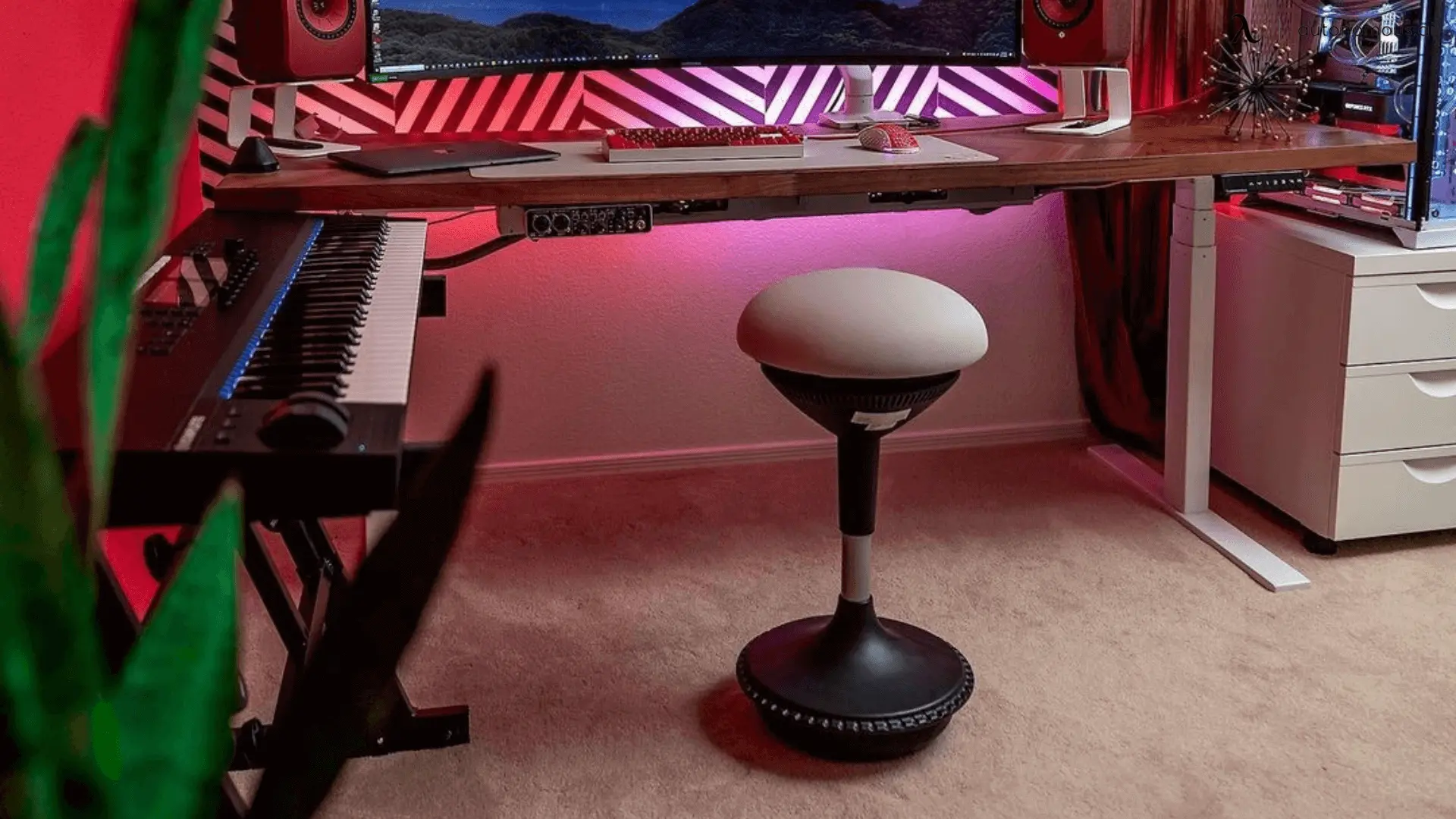
Each of these acoustic office pods brings something different to the table, and what makes them work is how well they balance structure, acoustics, and usability. No pod is perfect—but the right design, paired with smart setup choices, can turn even a corner of chaos into a focused, productive zone. Next up, we’ll dive into the nuts and bolts of how to build or install your ideal acoustic office pod right the first time.
Build Considerations From The Job Site
Once you've picked the right pod for your space, the next step is making sure it's built to last and perform. Here's where the seasoned builder in me comes in.
- Base & Site Prep
Start with a level base—concrete slab, pressure-treated deck, or adjustable footings. If you’re going outdoors, add a moisture barrier and make sure you’ve got proper drainage underneath. A sloped yard? No problem. Use adjustable supports and shims to get everything perfectly level.
- Sealing & Acoustic Integrity
Don’t underestimate small gaps. Even a quarter-inch crack around a door can leak sound. Use acoustic-rated door sweeps, foam gaskets, and silicone seals. If you’re DIYing it, stagger the studs and use resilient channels to reduce vibration transfer between walls.
- Smart Framing & Paneling
Plywood or OSB makes a stronger wall substrate than MDF. Combine it with acoustic panels or recycled PET felt inside. If the pod will be outside year-round, I recommend a rain screen or metal cladding system to keep the weather out and the structure dry.
- Electrical Routing
Plan your power layout early. Recessed conduit runs in the walls keep your space tidy and safe. Don’t forget dedicated breakers if you’re adding HVAC or running multiple monitors.
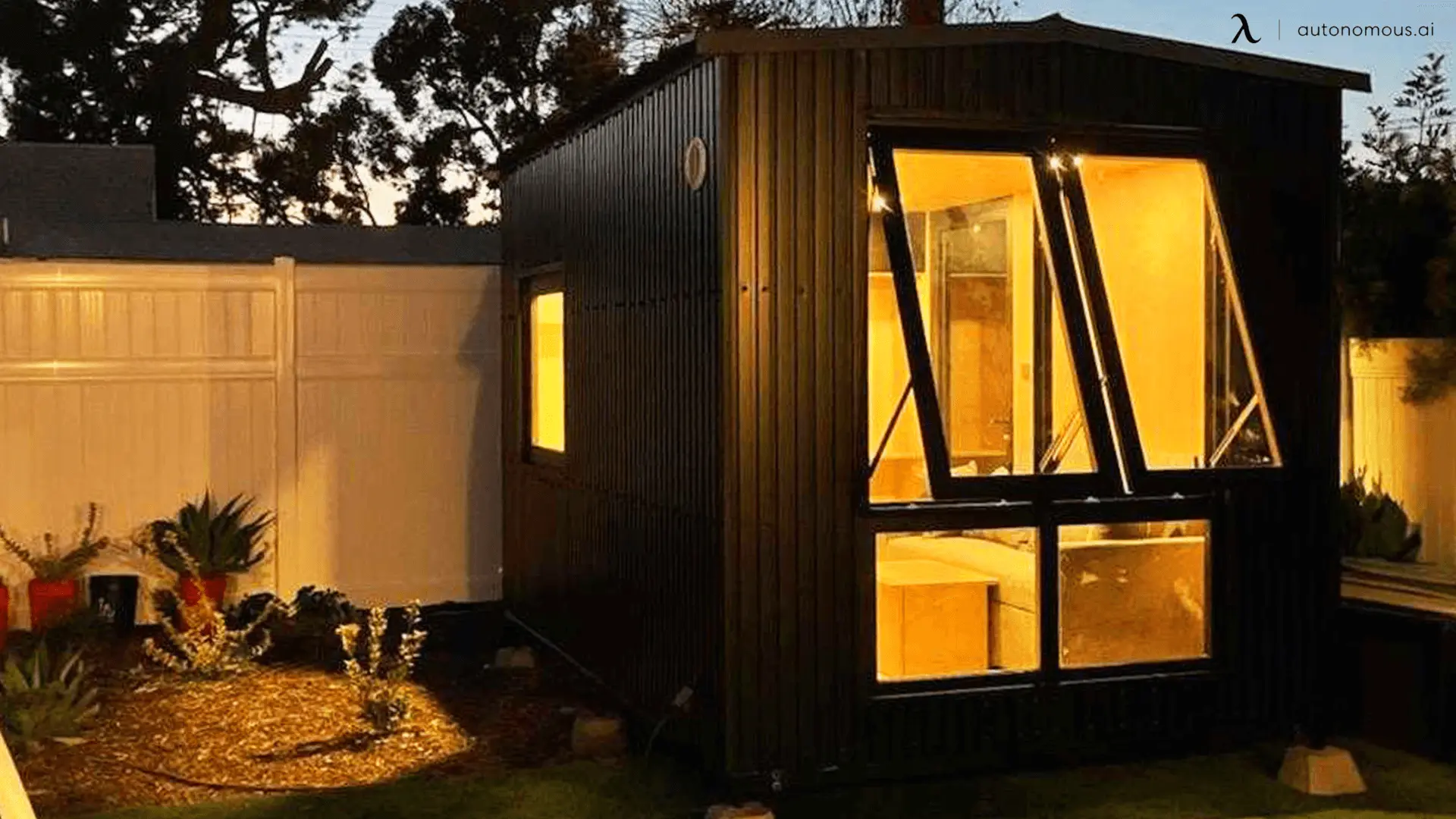
FAQs
1. Are office pods soundproof?
Most office pods are not 100% soundproof, but a well-built pod with quality materials can significantly reduce noise. Look for pods with double-pane acoustic glass, dense wall insulation, and sealed door frames. Many high-quality models offer sound reduction levels of 30–40 dB, which is enough to block background conversations and office noise, making them ideal for calls or deep focus.
2. Do acoustic panels work in an office?
Yes, they’re one of the most effective office acoustic solutions for reducing echo and increasing speech clarity. They help absorb sound waves, reduce echo, and improve overall acoustics in a room or pod. Wall-mounted PET felt panels, fabric-wrapped foam panels, or baffle-style ceiling panels are especially effective in open-plan layouts or enclosed pods where sound clarity and comfort matter.
3. Are office pods worth it?
If you value privacy, focus, and flexibility, then yes, office pods are worth it. Whether you work from home or in a busy team environment, a dedicated acoustic office pod allows you to concentrate without interruption. They also reduce the need for building renovations, making them a cost-effective and relocatable solution over time.
4. How much do meeting pods cost?
Meeting pods vary in price depending on size, features, and materials. A single-person acoustic pod can range from $5,000 to $10,000, while larger 2–4 person meeting pods typically cost $12,000 to $25,000 or more. Pods with integrated lighting, ventilation, and power systems will be on the higher end but provide more plug-and-play convenience.
5. What size pod do I need?
- 1-person pods: 25–50 sq ft
- 2-person meeting pods: 50–75 sq ft
- 4-person collaborative pods: 75–120 sq ft
For daily use with a full desk setup, aim for 80+ sq ft so you have room to move comfortably, store gear, and maintain airflow.
6. Can I install an office pod in an apartment?
Yes, there are indoor acoustic pods like the Zenbooth Solo that are designed for apartments or shared homes. These models are often delivered flat-packed, can be assembled without tools that damage walls or floors, and plug directly into standard outlets.
7. Do office pods get hot or stuffy?
A well-designed acoustic office pod includes built-in ventilation fans or passive airflow systems to keep fresh air circulating. You can search for models with silent fans, air vents, or even CO₂ sensors that activate airflow automatically. If you’re building one outdoors, you might want to add a mini split AC or portable climate control.
8. Do I need a permit to install an office pod?
Indoor pods generally do not require permits. Outdoor acoustic office pods may require zoning approval or permits, depending on your city and whether the unit is considered a permanent structure. Always check with your local building department before installation.
9. Can office pods be customized?
Yes. Many manufacturers offer custom wall colors, desk setups, lighting options, and size variations. If you're building your own, customization is nearly unlimited—just make sure any additions don’t compromise ventilation or sound isolation.
10. How long does it take to set up a pod?
- Prefabricated indoor pods: 1–3 hours to assemble
- Outdoor pods: 1–3 days with site prep, foundation, and power setup
DIY builds can take several weeks depending on materials, complexity, and weather.
Conclusion
If there’s one thing I’ve learned, it’s this: your environment shapes your performance. An acoustic office pod, done right, gives you that edge. It’s not just a quiet box—it’s a serious tool for deep work, clarity, and peace of mind.
Whether you’re building from the ground up or choosing a prefab unit, keep the focus on quality materials, functional layout, and sound isolation. Build it once, and your quiet work pod will serve you for years, supporting focus, productivity, and peace of mind no matter where you work.
Let’s build something great together.
Spread the word
.svg)

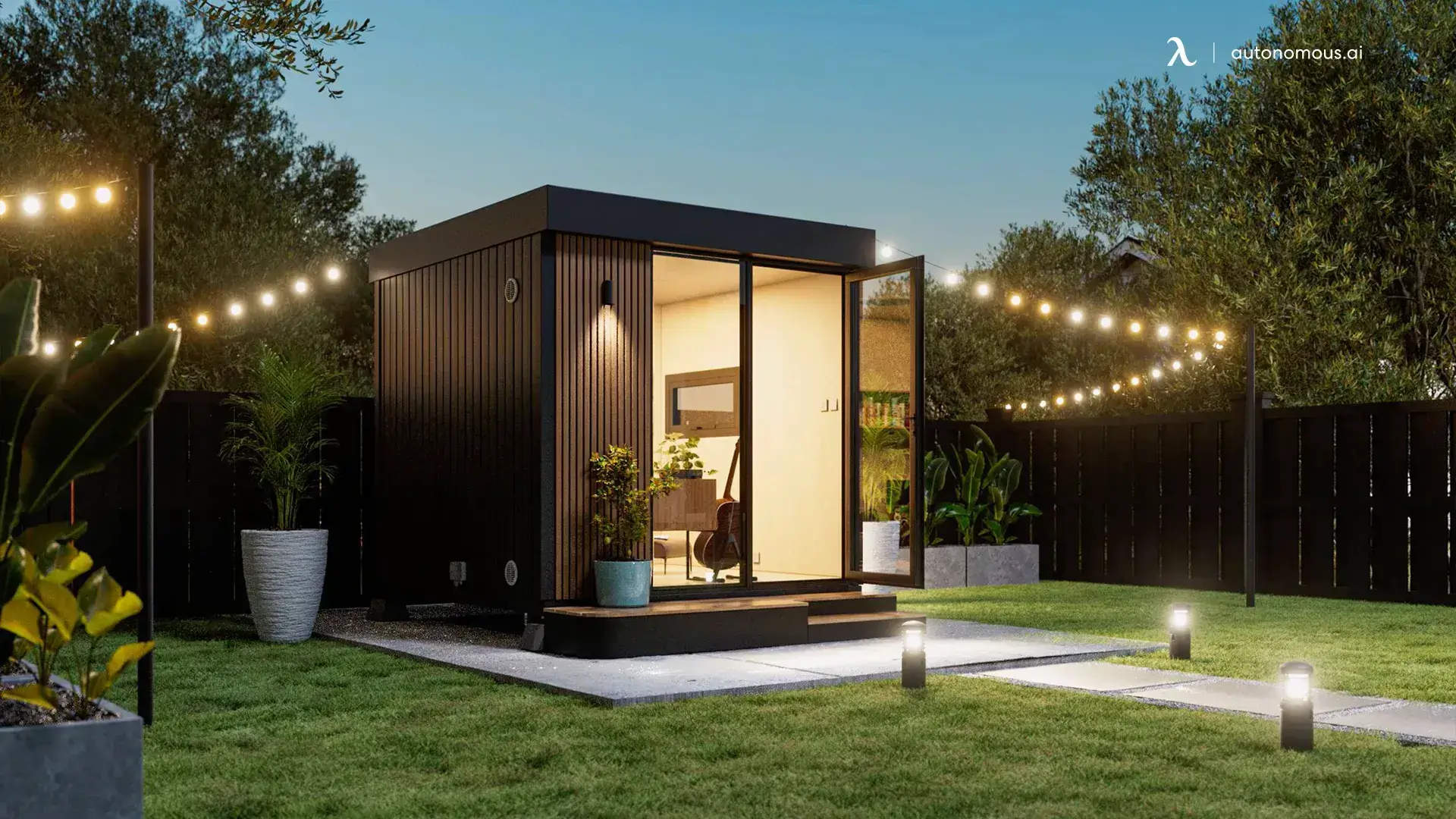

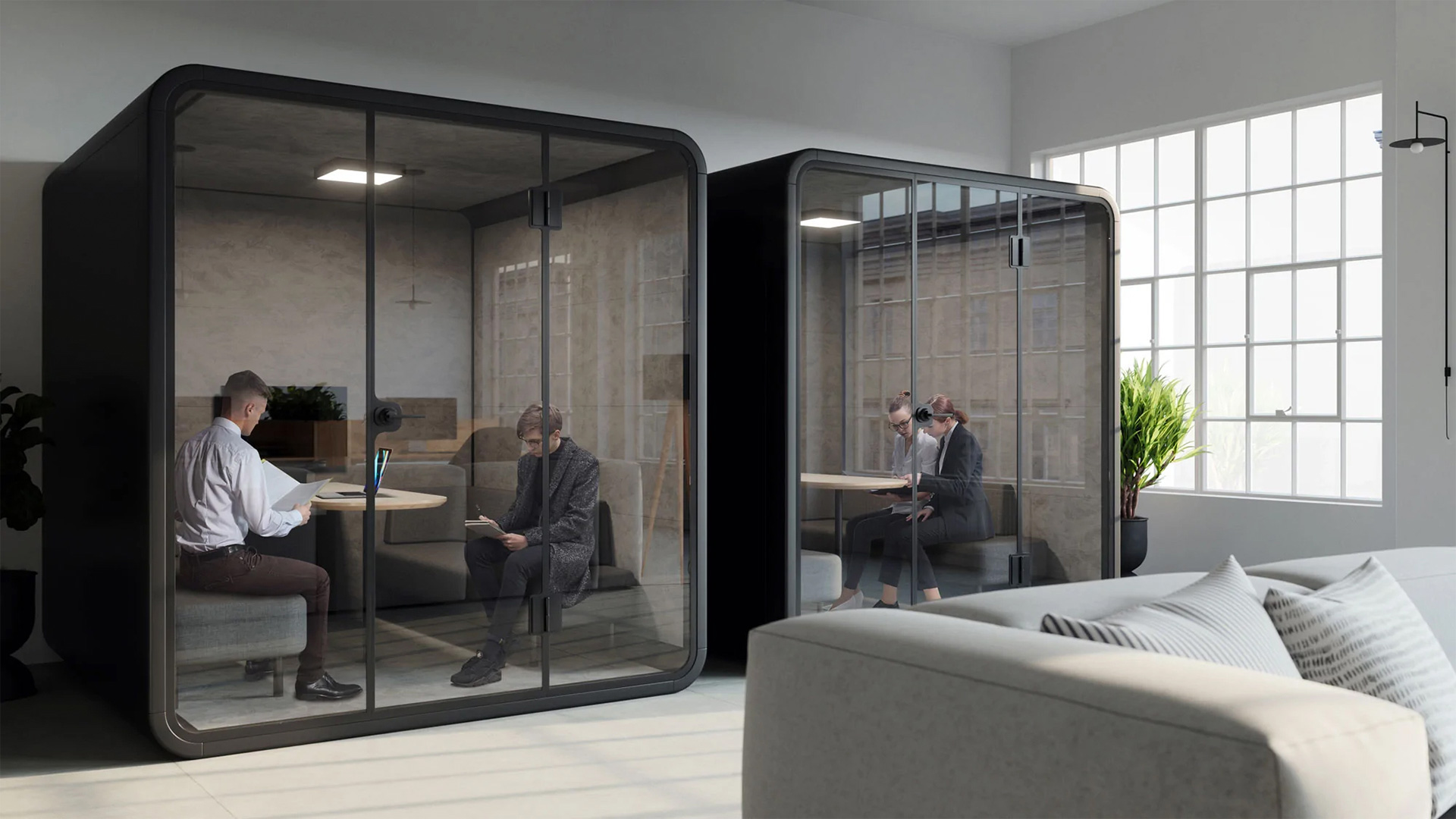
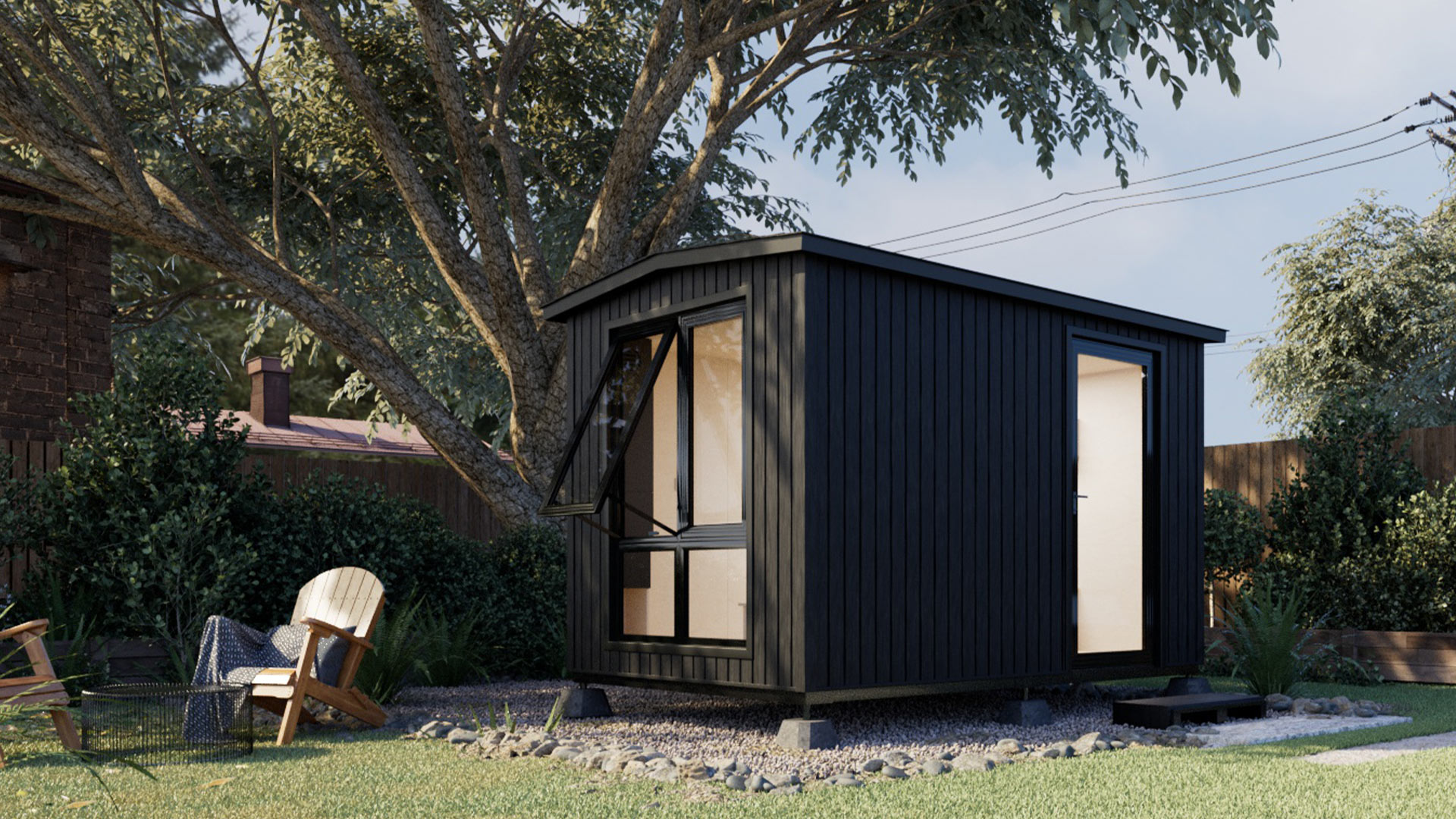
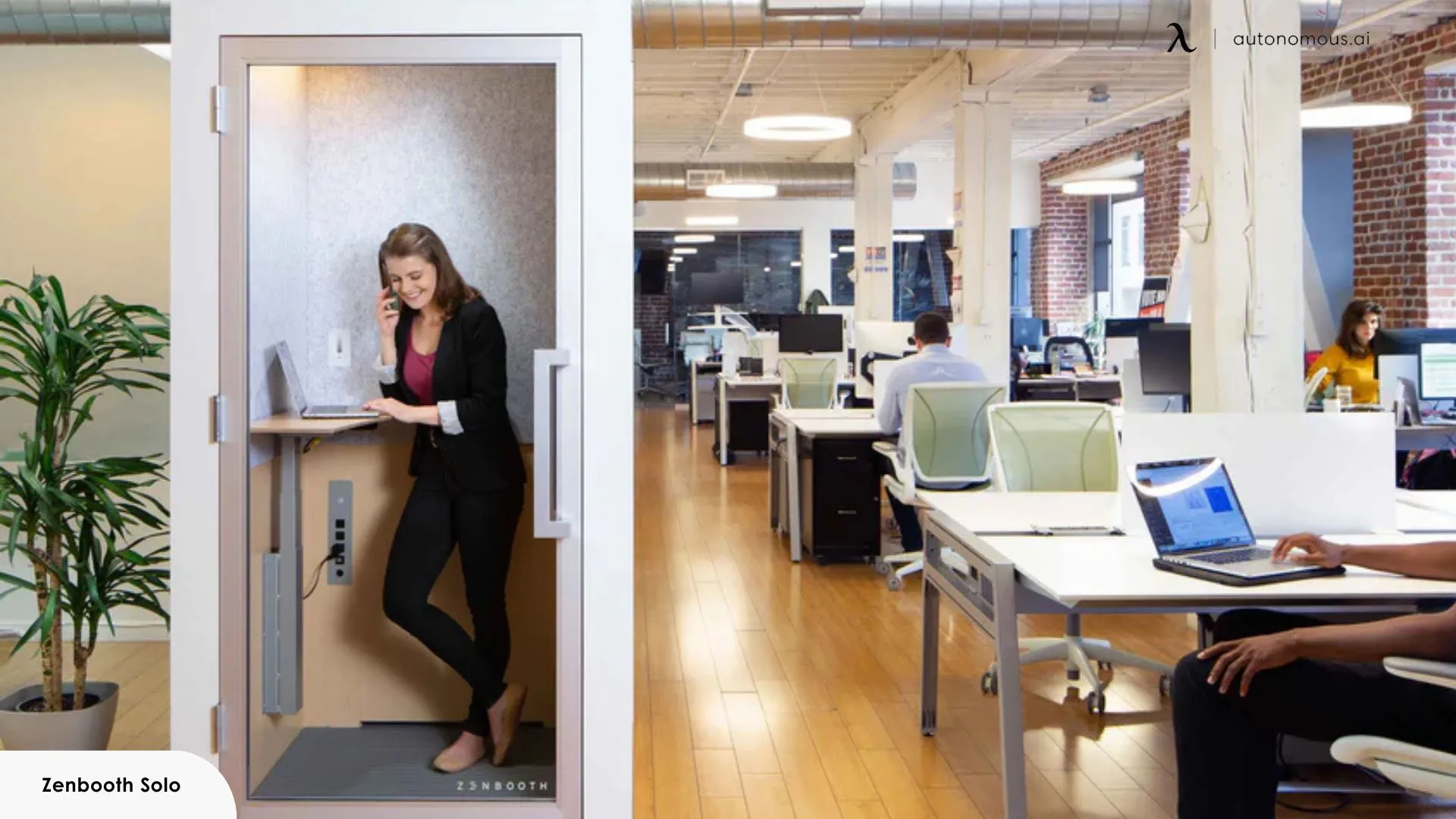


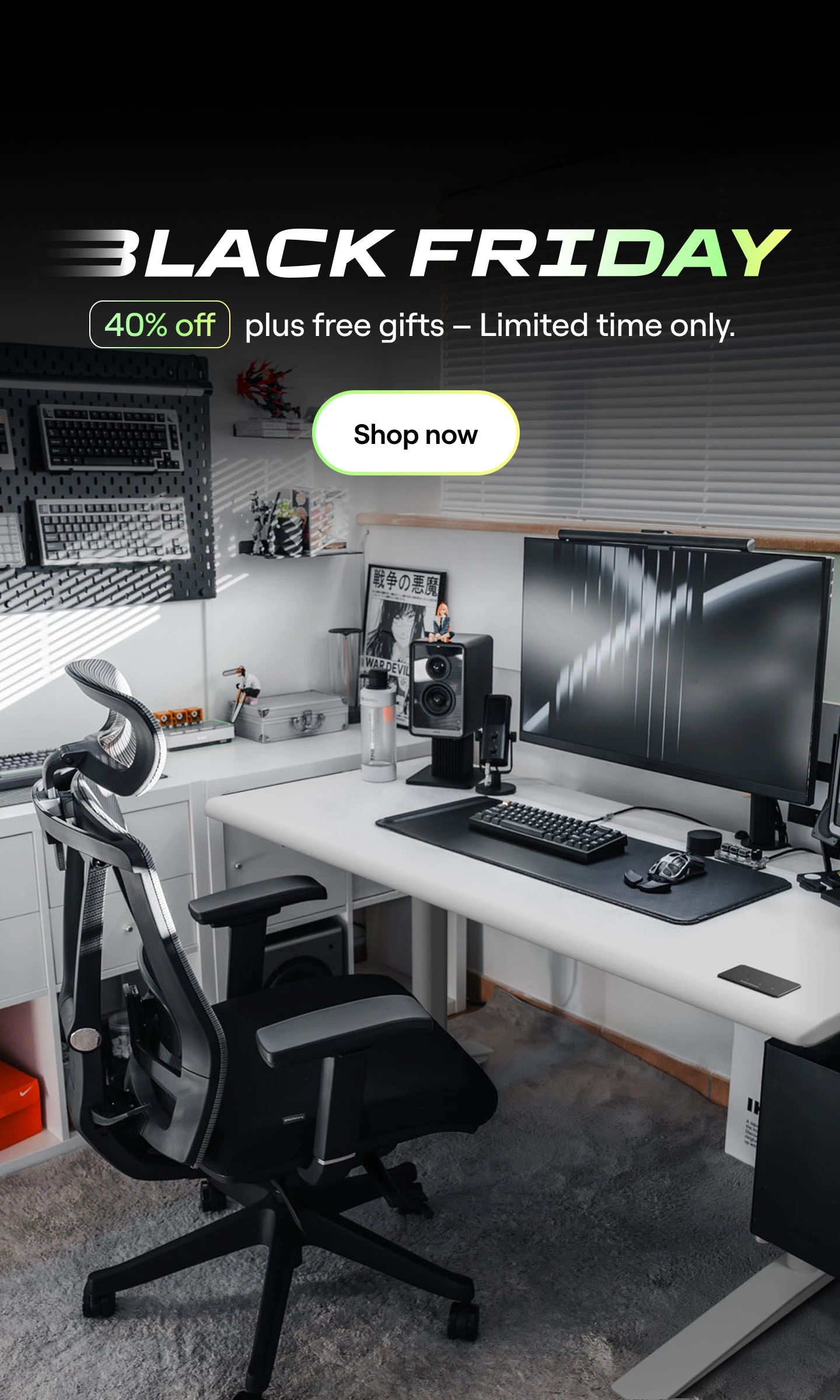
(1).webp)
